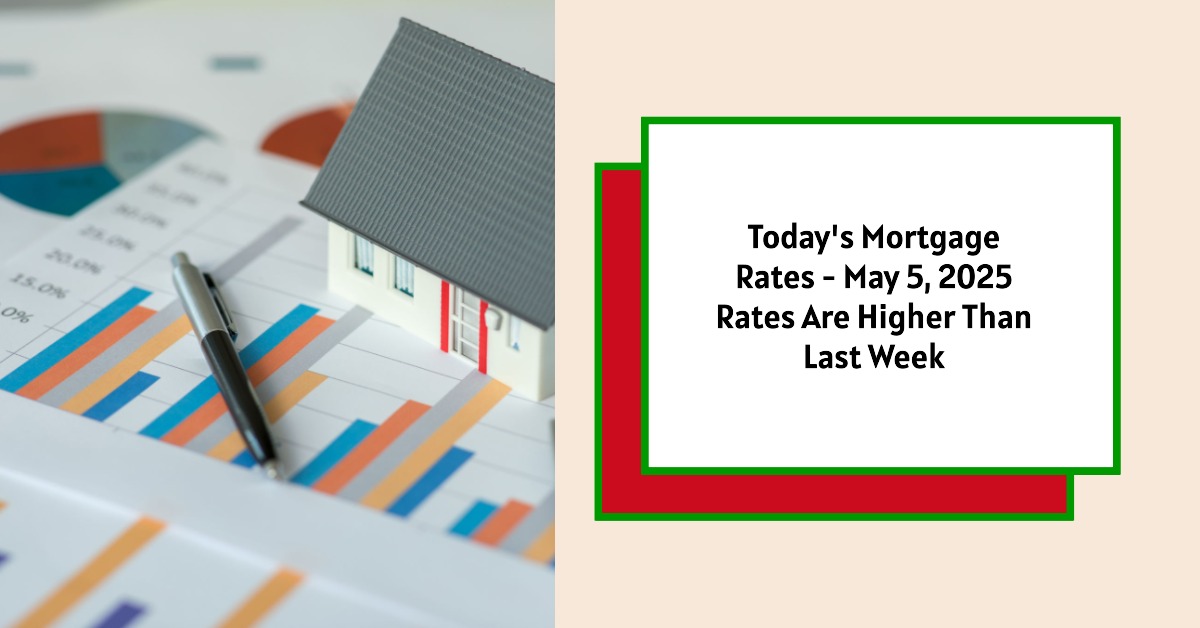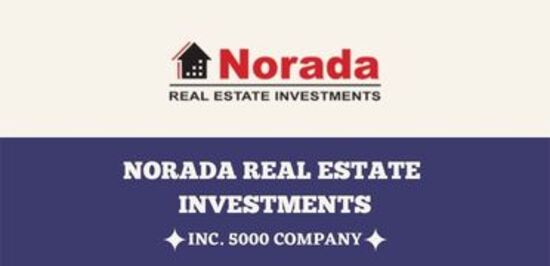On May 5, 2025, mortgage rates have experienced an increase, signaling that potential homebuyers and those looking to refinance may face higher borrowing costs. The average 30-year fixed mortgage rate has climbed to 6.70%, while the 15-year fixed rate has reached 5.95%. In the context of potentially volatile economic indicators, these rates reflect ongoing adjustments in the housing market. For those considering their options, now might be a time to act rather than continue waiting for rates to drop, as significant decreases are not anticipated any time soon.
Today's Mortgage Rates – May 5, 2025: Rates Increase by Nine Basis Points
Key Takeaways
- Mortgage rates increased today, May 5, 2025, with key rates rising.
- 30-year fixed-rate mortgage is now 6.70%; 15-year fixed-rate has reached 5.95%.
- Adjustable-rate mortgages are also up, notably the 5/1 ARM at 6.88%.
- Influencing factors include the Federal Reserve's stance on interest rates, which is projected to remain steady.
- Economic uncertainties, including tariffs impacting inflation and growth, complicate future mortgage rate trajectories.
Overview of Current Mortgage Rates
Mortgage rates fluctuate based on various economic factors, including federal monetary policy, inflation data, and overall demand for housing. According to Zillow, the current national averages for mortgage rates as of May 5, 2025, are as follows:
| Type of Mortgage | Current Rate (%) |
|---|---|
| 30-Year Fixed | 6.70% |
| 20-Year Fixed | 6.28% |
| 15-Year Fixed | 5.95% |
| 5/1 Adjustable Rate | 6.88% |
| 7/1 Adjustable Rate | 7.13% |
| 30-Year VA | 6.24% |
| 15-Year VA | 5.66% |
| 5/1 VA | 6.32% |
These rates serve as the national standard but will vary based on individual lender offerings, borrower qualifications, and local market conditions.
Refinance Rates Today
For those looking into refinancing their current mortgages, the average refinance rates on May 5, 2025, are as follows:
| Refinance Type | Current Rate (%) |
|---|---|
| 30-Year Fixed | 6.75% |
| 20-Year Fixed | 6.49% |
| 15-Year Fixed | 6.08% |
| 5/1 Adjustable Rate | 7.37% |
| 7/1 Adjustable Rate | 7.47% |
| 30-Year VA | 6.33% |
| 15-Year VA | 6.07% |
| 5/1 VA | 6.43% |
As evident from the table, refinance rates tend to be slightly higher, likely due to levels of risk associated with refinancing and differing terms.
What Contributes to Current Mortgage Rates?
Economic Indicators: The Federal Reserve plays a significant role in shaping interest rates. The upcoming Fed meeting this week is expected to maintain the current interest rates, with a staggering 97% probability that no cuts will occur. This decision stems from a cautious stance regarding economic indicators, including inflation and growth uncertainties resulting from existing tariffs.
As noted by Zillow, fluctuations in mortgage rates may occur this week based on market reactions to the meeting outcomes, but a drastic drop in rates is unlikely. Given the current average of 6.70% for a 30-year fixed mortgage, this suggests that waiting for lower rates could be a gamble.
Understanding the Numbers
To break down what these rates could mean for a potential borrower, consider the example of a $300,000 mortgage. For a 30-year term at 6.70%, the monthly payment is about $1,936, with a total interest payment over the life of the loan amounting to approximately $396,900.
Calculation Breakdown:
- Loan Amount: $300,000
- Interest Rate: 6.70%
- Loan Term: 30 years
- Monthly Payment: Calculated using the formula for a fixed-rate mortgage payment, $$ P = \frac{rPV}{1 – (1 + r)^{-n}} $$ where $$ r $$ is the monthly interest rate, $$ PV $$ is the principal amount, and $$ n $$ is the number of payments.
This results in a substantial financial commitment over three decades, making it crucial for borrowers to consider their long-term financial situation.
In contrast, if the same borrower opts for a 15-year term at 5.95%, their monthly payment would increase to around $2,523, but they would save significantly on interest, totaling about $154,225 throughout the loan.
The Adjustable-Rate Mortgage Option
The 5/1 and 7/1 adjustable-rate mortgages offer an interesting alternative. These typically start with lower initial rates but can adjust periodically. For example, with a 5/1 ARM, the interest rate remains the same for the first five years before adjusting annually based on market conditions.
With current numbers for ARMs being:
- 5/1 ARM: 6.88%
- 7/1 ARM: 7.13%
Although ARMs can provide lower initial payments, there are risks involved. If the rate rises at the time of adjustment, monthly payments could increase significantly, which can be challenging for many homeowners. Borrowers should evaluate their plans: if they intend to stay in their home longer than the fixed period of the ARM, they need to calculate potential costs versus the fixed-rate alternatives.
Read More:
Mortgage Rates Trends as of May 4, 2025
When Will the Soaring Mortgage Rates Finally Go Down in 2025?
Why Are Mortgage Rates Rising Back to 7%: The Key Drivers
Buying or Refinancing: Making the Decision
A critical factor in determining the best mortgage or refinance rate includes financial readiness. Lenders typically favor borrowers possessing:
- Higher down payments
- Excellent credit scores
- Low debt-to-income ratios
Such attributes improve the likelihood of securing lower rates. As a potential buyer or existing homeowner, it may be prudent to strengthen one’s financial profile before committing to a mortgage or refinance.
Factors affecting qualifications:
- Credit Score: The higher the score, the lower the rate you're likely to receive. A score above 740 is considered excellent and would often lead to the best available rates.
- Down Payment: A larger down payment (20% or more) can often lead to better terms and eliminate Private Mortgage Insurance (PMI).
- Debt-to-Income Ratio: This ratio compares your monthly debt payments to your gross monthly income. A lower ratio (below 36%) indicates less financial risk to lenders.
Current Market Sentiments
Homebuyers and those contemplating refinancing face a challenging environment. While higher interest rates may deter some buyers, others may still be incentivized to enter the market. Given the current economic climate, first-time homebuyers or those moving up in housing may find unique opportunities as various segments of the housing market experience differing levels of demand.
The market dynamics may sway slightly based on the economic outlook, particularly with inflation remaining a persistent challenge. The Federal Reserve's comments and decisions regarding interest rates can influence borrower sentiment significantly. If general economic conditions stabilize and inflation begins to ebb, one could anticipate potential changes in the mortgage landscape.
Looking Forward: The Future of Mortgage Rates
Navigating forward, the trajectory of mortgage rates is tied closely to the broader economic context. With ongoing inflationary pressures and economic growth challenges, there remains a strong element of uncertainty. Experts predict that while rates may not revert to historical lows seen in 2020 and 2021, a gradual easing may be realistic in the coming years, potentially stabilizing closer to the 6% mark.
As 2025 progresses, it will be essential for borrowers to stay updated on both macroeconomic indicators and Federal Reserve policies. The interplay of these factors shapes the mortgage market, influencing both borrowing costs and housing demand.
Key Factors to Watch
- Federal Reserve Decisions: Keep an eye on the outcomes of upcoming Federal Reserve meetings. Any adjustments to the federal funds rate can have a ripple effect on mortgage rates.
- Economic Reports: Data releases regarding inflation, job growth, and consumer spending will signal the strength of the economy and potentially influence the Fed's decisions.
- Consumer Demand: Shifts in consumer sentiment and housing demand could impact mortgage rates. A surge in demand, particularly during peak buying seasons, could prompt lenders to raise rates.
Summary:
As of May 5, 2025, mortgage rates are on the rise, reflecting ongoing shifts in our economic landscape. With current average rates hovering around 6.70% for a 30-year fixed mortgage and 6.95% for a 15-year fixed mortgage, borrowers may need to act sooner rather than later if they wish to secure financing. The interplay between federal policies, economic conditions, and inflation will continue to shape these rates moving forward. If you are contemplating a mortgage or refinance, it is advisable to stay informed and consider your options carefully.
Turnkey Real Estate Investment With Norada
Investing in real estate can help you secure consistent returns with fluctuating mortgage rates.
Despite softer demand, smart investors are locking in properties now while competition is lower and rental returns remain strong.
HOT NEW LISTINGS JUST ADDED!
Speak with an investment counselor (No Obligation):
(800) 611-3060
Also Read:
- Will Mortgage Rates Go Down in 2025: Morgan Stanley's Forecast
- Expect High Mortgage Rates Until 2026: Fannie Mae's 2-Year Forecast
- Mortgage Rate Predictions 2025 from 4 Leading Housing Experts
- Mortgage Rates Forecast for the Next 3 Years: 2025 to 2027
- 30-Year Mortgage Rate Forecast for the Next 5 Years
- 15-Year Mortgage Rate Forecast for the Next 5 Years
- Why Are Mortgage Rates Going Up in 2025: Will Rates Drop?
- Why Are Mortgage Rates So High and Predictions for 2025
- Will Mortgage Rates Ever Be 3% Again in the Future?
- Mortgage Rates Predictions for Next 2 Years
- Mortgage Rate Predictions for Next 5 Years
- Mortgage Rate Predictions: Why 2% and 3% Rates are Out of Reach
- How Lower Mortgage Rates Can Save You Thousands?
- How to Get a Low Mortgage Interest Rate?
- Will Mortgage Rates Ever Be 4% Again?



